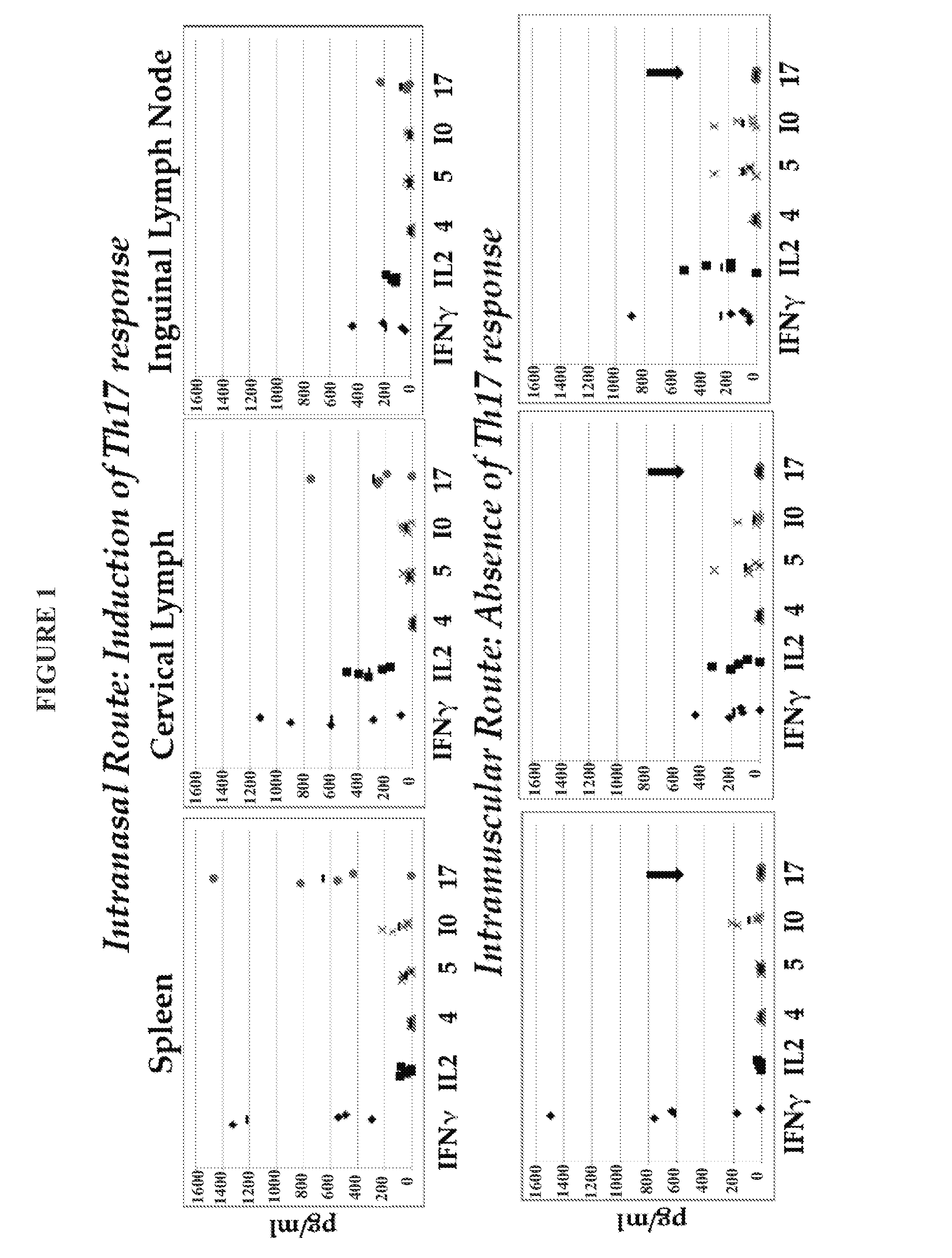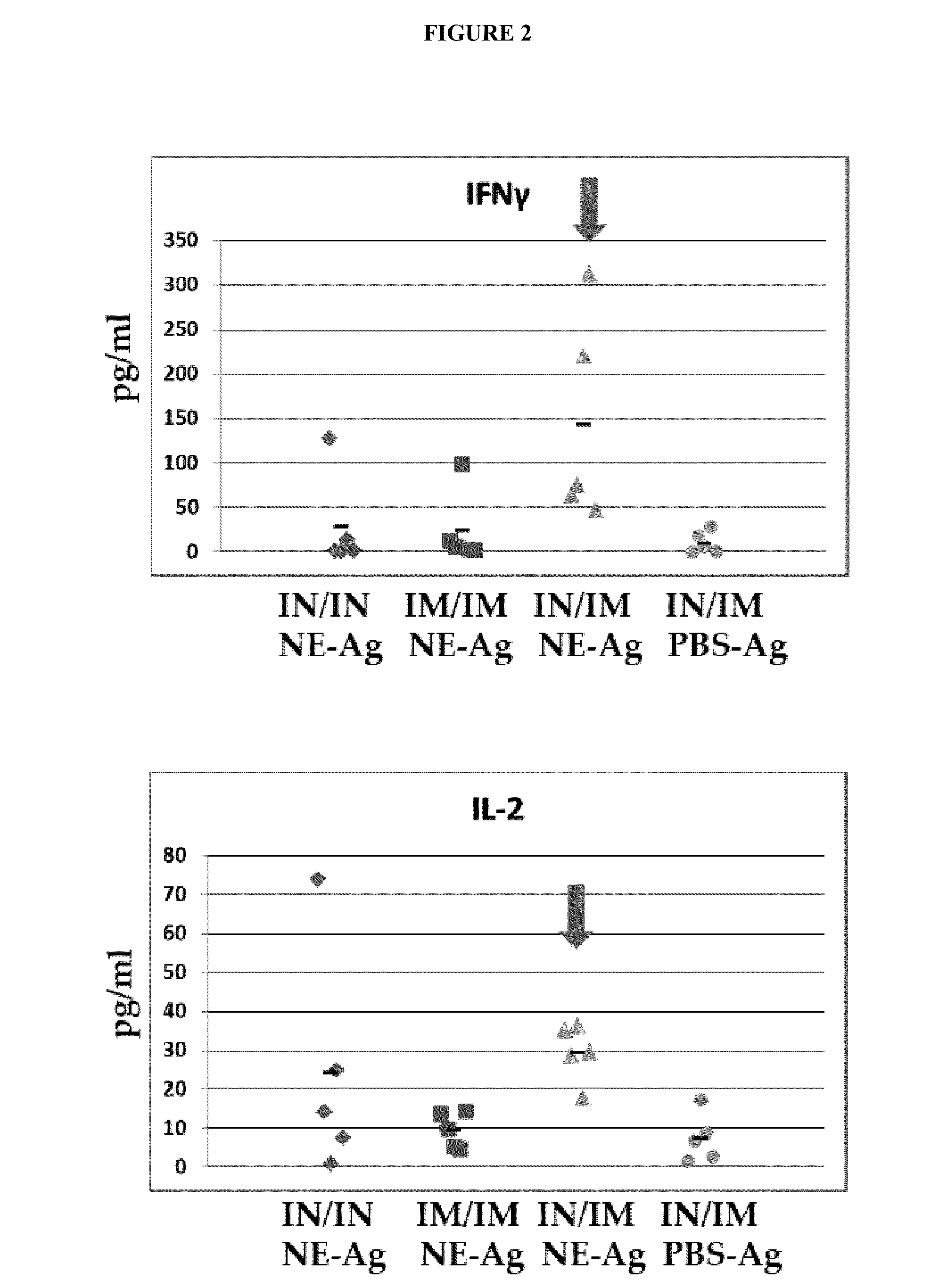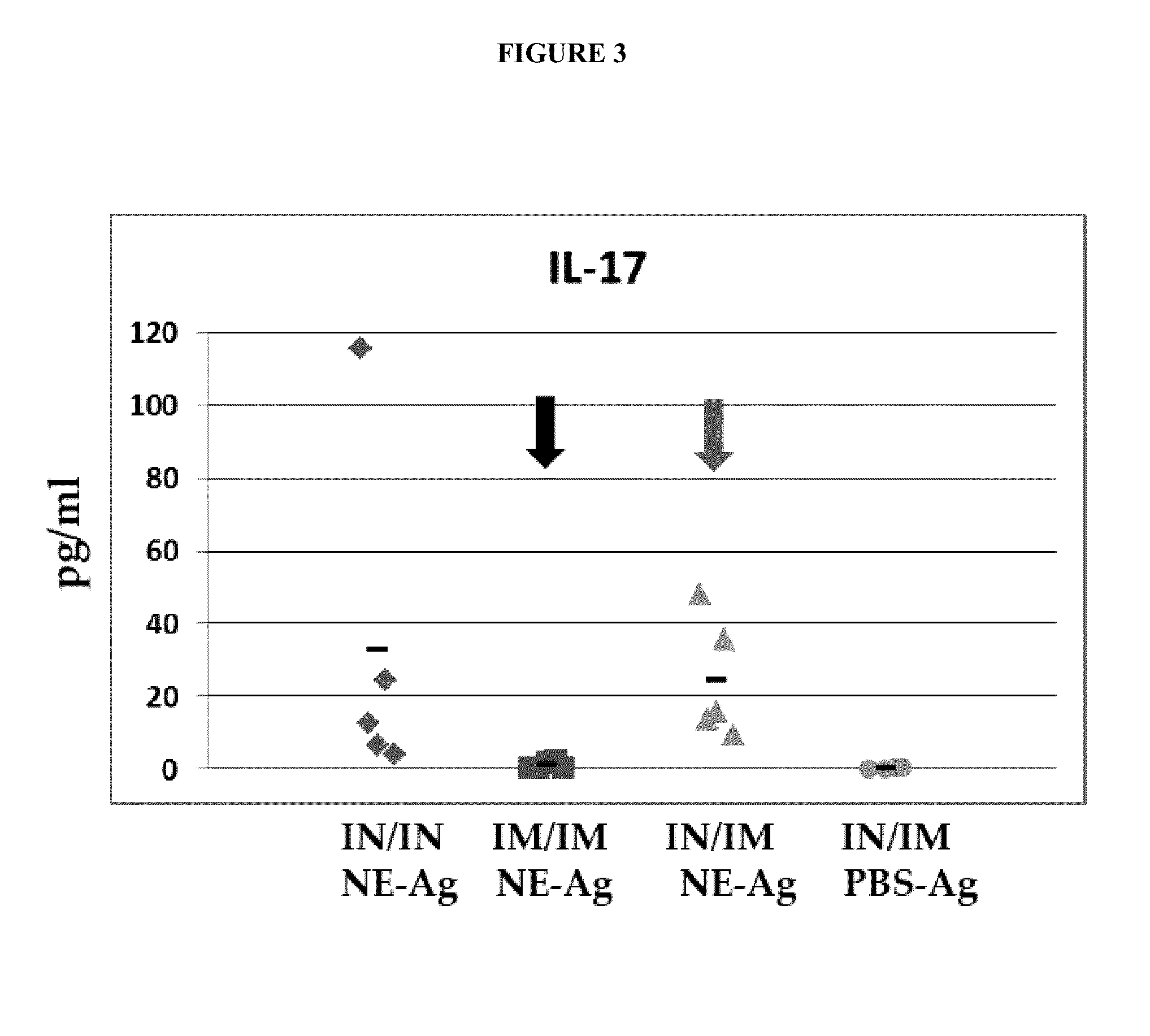Immunogenic compositions comprising nanoemulsion and methods of administering the same
a technology of nanoemulsions and compositions, applied in the direction of antibody medical ingredients, viruses/bacteriophages, dsdna viruses, etc., can solve the problems of not all immune responses are necessarily activated, many antigens are poorly immunogenic or non-immunogenic, and parenteral immunization regimens are usually ineffective in inducing secretory iga responses. to achieve the effect of reducing the risk of infection
- Summary
- Abstract
- Description
- Claims
- Application Information
AI Technical Summary
Benefits of technology
Problems solved by technology
Method used
Image
Examples
example 1
NE Formulation and Route of Administration can Influence Type of Immune Response
[0344]Experiments were conducted during development of embodiments of the invention in order to determine if a heterologous prime / boost administration regimen would affect immune responses generated in subjects. In particular, experiments were conducted during development of embodiments of the invention in order to determine if combined, heterologous intranasal and intramuscular administration of an immunogenic composition (comprising nanoemulsion plus antigen) would alter immune response generated (e.g., improve activation of Th-1 type response induced by an immunogenic composition comprising nanoemulsion / immunogen.
[0345]Study Design: C57BL / 6 mice: 5 per group were administered the following nanoemulsion plus antigen: 20 μg HBsAg. For intranasal administration, the immunogenic composition contained a NE concentration of 20% and 20 μg HBsAg, with a total volume of 15 μl administered. For intramuscular ad...
example 2
Levels of Anti-F IgG in Sera of Cotton Rats 2 Weeks after 3rd Immunization or 4 Weeks after 1 Dose of IM Immunization
[0349]During the development of embodiments of the inventions provided herein, experiments were conducted to evaluate the immunogenic capacity of NE-antigen compositions administered IN and IM to a model mammalian system (e.g., a rat). In particular, animals were immunized three times with immunogenic compositions comprising nanoemulsion and RSV antigen (NE-RSV). The NE-RSV compositions were administered IN and IM and sera were obtained to evaluate the presence of antibodies against an antigen of RSV, e.g., the RSV fusion (F) protein. Formalin inactivated RSV (FI-RSV) and RSV strain A2 (A2 infection) were used as controls. After drawing sera, IgG antibodies against RSV fusion (F) protein were quantified (see FIG. 7).
[0350]As shown in FIG. 7, all groups generated significant antibody levels. NE-RSV yielded the lowest levels of serum antibodies (e.g., relative to the sa...
example 3
Neutralization Activity in Sera of Cotton Rats 2 Weeks after 3rd Immunization with IN Versus IM Vaccine
[0351]During the development of embodiments of the inventions provided herein, experiments were performed to evaluate the neutralization of live virus by antibodies induced by NE-RSV administered IN and IM. Neutralization assays were performed in Vero cell culture. Plates are inoculated with Vero cells and RSV virus is added in the presence of increasing dilutions of the serum being tested for neutralizing activity. Virus added with non-immune serum was used as a positive control. The serum dilution that results in a 50% reduction of the virus titer is measured and the values reported as the inverse of the dilution that resulted in 50% inhibition of the viral infection (e.g., a serum sample that produced a 50% inhibition at a dilution of 1:250 has a neutralization activity (NU) of 250 units.
[0352]After immunization of Cotton rats three times with NE-RSV administered IN or IM, sera ...
PUM
| Property | Measurement | Unit |
|---|---|---|
| particle sizes | aaaaa | aaaaa |
| particle sizes | aaaaa | aaaaa |
| particle sizes | aaaaa | aaaaa |
Abstract
Description
Claims
Application Information
 Login to View More
Login to View More - R&D
- Intellectual Property
- Life Sciences
- Materials
- Tech Scout
- Unparalleled Data Quality
- Higher Quality Content
- 60% Fewer Hallucinations
Browse by: Latest US Patents, China's latest patents, Technical Efficacy Thesaurus, Application Domain, Technology Topic, Popular Technical Reports.
© 2025 PatSnap. All rights reserved.Legal|Privacy policy|Modern Slavery Act Transparency Statement|Sitemap|About US| Contact US: help@patsnap.com



